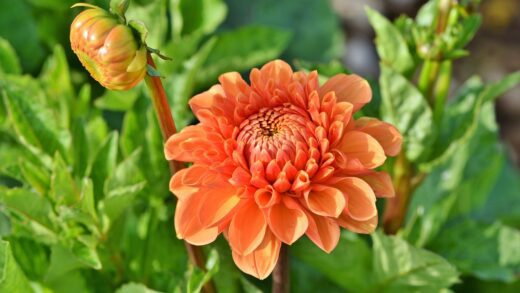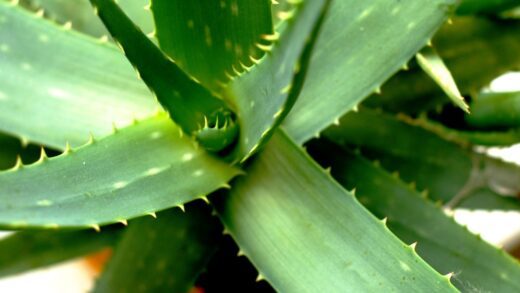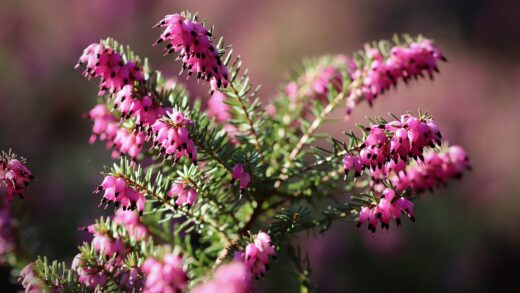Providing the Asian persimmon with a balanced and timely supply of nutrients is fundamental to achieving vigorous growth, resilient health, and a bountiful harvest of high-quality fruit. While persimmon trees are not excessively demanding in their nutritional needs, they require a consistent availability of key macro and micronutrients to perform their essential physiological functions. A well-structured fertilization program, guided by soil analysis and careful observation of the tree, moves beyond guesswork to provide targeted support. Understanding the specific roles of different nutrients and the best methods for their application is crucial for sustaining the long-term productivity of this remarkable tree.
The nutritional health of a persimmon tree is a complex interplay between soil chemistry, nutrient availability, and the tree’s developmental stage. The primary macronutrients—nitrogen, phosphorus, and potassium—are required in the largest quantities and play distinct, critical roles. Nitrogen fuels vegetative growth, including the development of leaves and shoots; phosphorus is essential for root formation, energy transfer, and flowering; and potassium contributes to fruit quality, disease resistance, and overall hardiness. An imbalance in any of these can lead to specific health problems and reduced yields.
Beyond the “big three,” a range of secondary nutrients and micronutrients, such as calcium, magnesium, sulfur, iron, and zinc, are also vital, albeit in smaller amounts. Deficiencies in these micronutrients can cause significant issues, such as chlorosis (yellowing leaves) or stunted growth, which can easily be mistaken for other problems. The availability of these nutrients is heavily influenced by the soil’s pH. A soil that is too acidic or too alkaline can “lock up” certain nutrients, making them inaccessible to the tree’s roots even if they are physically present in the soil.
Therefore, a successful fertilization strategy begins not with a bag of fertilizer, but with a comprehensive understanding of the soil. Conducting a professional soil test is the most important first step, providing a detailed snapshot of the soil’s nutrient content and pH level. This information allows for a precise and efficient approach to fertilization, ensuring that you apply only what is needed, in the correct amounts. This scientific approach prevents the common and often damaging practice of over-fertilization, which can harm the tree, negatively impact the environment, and waste resources.
Essential nutrients for persimmon growth
Nitrogen (N) is arguably the most critical nutrient for the vegetative growth of a persimmon tree. It is a core component of chlorophyll, the molecule responsible for photosynthesis, as well as amino acids and proteins. An adequate supply of nitrogen promotes lush, green foliage and strong shoot extension, which is necessary for building the tree’s framework and supporting fruit production. However, an excess of nitrogen can be detrimental, leading to overly vigorous, weak growth, delayed fruit maturity, and a significant increase in premature fruit drop. The goal is to provide enough nitrogen for healthy growth without stimulating an excessive vegetative response.
More articles on this topic
Phosphorus (P) plays a central role in the tree’s energy metabolism, being a key component of ATP (adenosine triphosphate), the energy currency of the cell. It is vital for healthy root development, especially in young trees, and is also essential for the processes of flowering and fruit set. While persimmon trees do not require large amounts of phosphorus compared to nitrogen and potassium, a deficiency can lead to stunted growth and poor fruit development. Most soils contain adequate levels of phosphorus, but a soil test can confirm if supplementation is needed.
Potassium (K), often referred to as the “quality” nutrient, is crucial for a wide range of functions within the persimmon tree. It helps regulate water movement, activates enzymes, and is essential for the transport of sugars from the leaves to the developing fruit. An adequate supply of potassium is directly linked to improved fruit size, color, sweetness, and overall quality. It also enhances the tree’s ability to withstand environmental stresses, such as drought, and improves its resistance to certain diseases.
Micronutrients, though needed in very small quantities, are just as essential as the macronutrients. For example, iron is a critical component in chlorophyll synthesis, and its deficiency leads to interveinal chlorosis, where the leaf veins remain green while the tissue between them turns yellow. Zinc is important for hormone production and leaf expansion. Deficiencies in these and other micronutrients can limit the tree’s growth and productivity, even when the major nutrients are plentiful. The availability of these micronutrients is highly dependent on the soil pH being in the optimal range.
Conducting soil tests and interpreting results
A soil test is the single most valuable tool for developing an effective and responsible fertilization plan. It provides a scientific basis for nutrient management, replacing assumptions with concrete data. To conduct a test, you will need to collect several soil samples from the area around your persimmon tree. Using a clean trowel or soil probe, take samples from a depth of 15-20 centimeters at various points under the tree’s canopy, out to the dripline. Combine these subsamples in a clean bucket to create a single, representative composite sample for analysis.
More articles on this topic
Once the sample is collected, it should be sent to a reputable agricultural or university extension laboratory for analysis. A standard soil test will provide a wealth of information, including the soil’s pH, the levels of organic matter, and the quantities of key nutrients like phosphorus, potassium, calcium, and magnesium. The report will typically indicate whether the levels of these nutrients are low, adequate, or high for fruit tree production. It is important to inform the lab that the sample is for growing persimmon or general fruit trees, as their recommendations will be tailored to that specific use.
Interpreting the results is the next crucial step. The soil pH reading is one of the most important pieces of information. For persimmons, the ideal range is 6.0 to 7.0. If the pH is too low (acidic), the report will likely recommend applying lime to raise it. If the pH is too high (alkaline), it may recommend adding sulfur to lower it. Adjusting the pH to the optimal range is essential, as it directly impacts the tree’s ability to absorb nutrients from the soil.
The nutrient analysis will guide your choice of fertilizer. If phosphorus and potassium levels are adequate, for example, you may only need to apply a nitrogen source. If potassium is low, you should choose a fertilizer with a higher last number (the ‘K’ in N-P-K). The report will often provide specific recommendations on the type and amount of fertilizer to apply per tree or per unit area. Following these professional recommendations ensures that you are addressing the specific needs of your soil and tree, leading to better results and avoiding the problems of nutrient imbalances.
Organic fertilization methods
Organic fertilization methods focus on building long-term soil health and providing a slow, steady release of nutrients to the persimmon tree. The cornerstone of organic nutrient management is the regular application of high-quality compost. Compost is a rich source of a wide array of macro and micronutrients, and it also adds valuable organic matter to the soil. This organic matter improves soil structure, increases its water-holding capacity, and provides a food source for beneficial soil microorganisms that help make nutrients available to the tree’s roots.
Applying a layer of compost around the base of the persimmon tree each spring is an excellent way to provide a balanced, slow-release feeding. The compost should be spread on the soil surface under the tree’s canopy, extending out to the dripline, and can be covered with a layer of mulch. As the compost breaks down, its nutrients will gradually be carried down into the root zone by rainfall and irrigation. This “top-dressing” method feeds the soil, which in turn feeds the tree, creating a healthy and sustainable ecosystem.
Aged animal manures, such as those from cattle, horses, or poultry, are another excellent source of organic nutrients. It is crucial that the manure is well-composted or aged before application, as fresh manure is too high in nitrogen and can “burn” the tree’s roots. Composted manure provides a good balance of nutrients and also contributes significantly to the soil’s organic matter content. Like compost, it should be applied as a top-dressing in the spring.
Other organic fertilizers can be used to target specific nutrient needs. For example, bone meal is a good organic source of phosphorus and calcium, while greensand or kelp meal can provide potassium and a range of trace minerals. Cover crops, such as clover or vetch, can also be planted around the trees. These plants, known as “green manures,” can fix atmospheric nitrogen in the soil and, when tilled in, add a significant amount of organic matter. An integrated approach using a combination of these organic methods will build a fertile and resilient soil environment for your persimmon tree.
Synthetic fertilizer application and timing
When a soil test reveals specific deficiencies, or when a quicker nutrient boost is needed, synthetic fertilizers can be a useful tool in persimmon tree care. These fertilizers provide nutrients in a concentrated, readily available form. A balanced fertilizer, such as a 10-10-10 or 12-12-12 formulation, is often recommended for general use if the soil is not significantly deficient in any one nutrient. The three numbers on the bag represent the percentage by weight of nitrogen (N), phosphate (P), and potassium (K), respectively.
The timing of fertilizer application is critical to ensure that the nutrients are available when the tree needs them most. For mature, fruit-bearing persimmon trees, the best time to apply fertilizer is in the late winter or early spring, just before new growth begins. This provides the tree with the necessary resources for the initial flush of growth, flowering, and fruit set. A second, smaller application can sometimes be beneficial in early summer to support fruit development, but late-season applications of nitrogen should be avoided as they can stimulate new growth that may not harden off properly before winter.
Proper application technique is essential to prevent root damage and ensure effective uptake. The fertilizer should never be concentrated in a small area or placed directly against the trunk of the tree. Instead, it should be broadcast evenly on the ground, starting about 30 centimeters away from the trunk and extending out to the dripline (the edge of the canopy). After spreading the granular fertilizer, it is important to lightly rake it into the surface of the soil and then water the area thoroughly to help dissolve the granules and carry the nutrients down into the root zone.
The amount of fertilizer to apply depends on the tree’s age and size. As a general guideline, a young, non-bearing tree may only need a small amount, perhaps a cup, of balanced fertilizer. A large, mature tree may require one to two kilograms. However, these are just rough estimates, and the specific recommendations from your soil test should always take precedence. It is always better to err on the side of applying too little fertilizer rather than too much, as the consequences of over-fertilization are generally more severe.
Addressing common nutrient deficiencies
Visually identifying nutrient deficiencies can be challenging, as many different problems can cause similar symptoms, but careful observation can provide valuable clues. One of the most common deficiencies seen in fruit trees is iron deficiency, which typically occurs in high-pH (alkaline) soils. It manifests as interveinal chlorosis, where the leaves turn a pale yellow or even white, while the veins remain distinctively green. This pattern usually appears on the newest, youngest leaves first.
Nitrogen deficiency is characterized by a general, uniform yellowing (chlorosis) of the foliage, usually starting with the older, lower leaves. The tree’s overall growth will be stunted, and the leaves will be smaller than normal. This is a clear signal that the tree lacks the fundamental building blocks for chlorophyll and proteins. A timely application of a nitrogen-containing fertilizer will usually correct this issue, and the leaves will begin to “green up” within a few weeks.
Potassium deficiency can also cause yellowing of the leaves, but it typically starts at the leaf margins (edges) of the older leaves and progresses inward. The edges may look scorched or burnt. This deficiency not only affects foliage but can also result in smaller, poor-quality fruit and a weakened tree that is more susceptible to stress and disease. Ensuring adequate potassium is especially important for fruit-bearing trees.
When a deficiency is suspected, the first step should always be to confirm it with a soil test or, for a more precise diagnosis, a foliar analysis, which tests the nutrient content of the leaves themselves. Once the specific deficiency is identified, a targeted treatment can be applied. For micronutrient deficiencies like iron chlorosis, a foliar spray containing chelated iron can provide a quick, though temporary, fix. The long-term solution, however, often involves correcting the underlying soil pH problem that is causing the nutrient to be unavailable to the tree.




















